-
Posts
47 -
Joined
-
Last visited
Content Type
Forums
Profiles
Gallery
Blogs
Downloads
Events
Everything posted by Asphalt_Pilot
-
Yeah, probably. One thing I have learned through decades of riding and several motorcycles is that it is very easy to over-lube the chain. Most of us (me included) just put way too much on there. Regardless of how much you put on, one key to long chain - and sprocket - life is to make sure you WIPE OFF the excess - aggressively. Otherwise you just collect dirt and debris, generating a nice grinding paste. Recently I've gone for elegant and simple - I just carry a small dropper bottle of 90 wt gear lube. a drop or two on each link, and wipe the excess off. Very tidy, actually.
-
-
From the album: VFR at 100k Miles
Picture of me and my '94 VFR on Route 8, in Otis, MA, right after it had turned 100,000 miles on the odometer. September 25, 2011. -
From the album: VFR at 100k Miles
Pic of the odometer of my '94 VFR, right after it turned over 100,000 miles. -

Asphalt Pilot's Scenes from the Road
Images added to a gallery album owned by Asphalt_Pilot in Member's Gallery
-
From the album: Asphalt Pilot's Scenes from the Road
I occasionally get to Tucson on business, and my good buddy Bruce will often take me riding. This is a pic from a ride on Mount Lemmon, May 15 2009, -
From the album: Asphalt Pilot's Scenes from the Road
My wife Sue and I on a weekend trip to the White Mountains in New Hampshire. Kids were with the grandparents, so we got a nice weekend by ourselves. -
From the album: Asphalt Pilot's Scenes from the Road
My daughter Alexandra, on a ride to Tolland MA. April 4, 2010. Route 8 is a nice ride. -
From the album: Asphalt Pilot's Scenes from the Road
Some of the VFRs gathered on Saturday morning at WDGAH 9, in West Lebanon, New Hampshire, in front of the Fireside Inn, WDGAH home base for the last 11 years. -
From the album: Asphalt Pilot's Scenes from the Road
Picture of lined up VF/VFRs in 1998 in Lake George, NY, at the WDGAH gathering. My '85 VF1000R is the first bike in line.© Marc Brinker, 1998
-
From the album: Hardware
Less than 6300 miles. Found this when looking at a parts bike and bought it on the spot. Looks almost like it just rolled off the showroom floor. -
From the album: Hardware
Nice weekend ride with my wife. My '94 VFR, her '88 Hawk. -
From the album: Hardware
Animal interaction . . . helmet did it's job. -
From the album: Hardware
Started out in life red . . . now black metallic -
From the album: Asphalt Pilot's Scenes from the Road
-

09 Covered Bridge and escarpment - Stark, NH.JPG
Asphalt_Pilot posted a gallery image in Member's Gallery
From the album: Asphalt Pilot's Scenes from the Road
-
From the album: Asphalt Pilot's Scenes from the Road
© ©vfdiscussion.com
-
-
Look for 13.5 - 14.5 volts (roughly) at anything above 2000 rpm. The r/r has two failure modes (I've had them both!): 1) The voltage will drop below 12 V -- meaning the r/r isn't charging the system and you are running off battery power (but won't be for long because the battery will die). 2) The voltage will jump to like 18 - 19 V -- meaning the r/r is failing to regulate the voltage. This is the more common failure mode. It will 'cook' your battery. This happened to me on a multi-day trip. Stopping and then starting the engine sometimes made it work, but a couple of times I had to let it cool off before it would regulate again. This has been a problem with older VFRs as well (had one fail on my '85 VF1000R). Some have failed at low mileage, but most seem to fail around 20 - 25k miles. The r/r on my '94 lasted until 55k miles. Consensus is that the failure is heat-related; the replacement OEM r/r Honda now sells has a decent heat-sink mounted on it and is a much better unit. I think that unit was introduced in '01 or so. If you don't see cooling fins on top of your r/r, you have the old type. You can see them by removing the seat. One key item that is often overlooked is to also make sure that you have good grounding points on the frame. Remove the bolt holding the green grounding wires, and use a brass or steel wire brush to clean the ring terminals and mating frame/bolt surfaces. Even if they look ok, cleaning can make a difference. The primary grounding point on a '94 - '97 is on the right frame above the brake pedal area, don't know about other models. Also periodically check the white connector where the r/r plugs into the harness. If it's discolored (brown), that is due to heat. Keep a close eye on it. These will burn to the point of melting if the r/r gets too hot. (almost happened to me, but I caught it before the r/r failed). Honda recognized this problem and sells a connector repair kit. I highly suggest that you install a voltmeter, and carry a spare r/r if you plan any multi-day trips. My voltmeter saved me from the aggravation of a tow and a day or two waiting for parts, far from home. This is the only weak point on the VFR, so best to prepare for it!




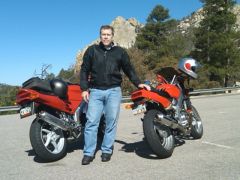
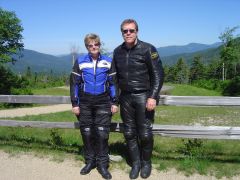
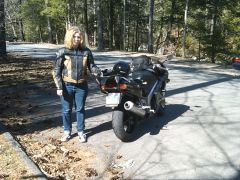
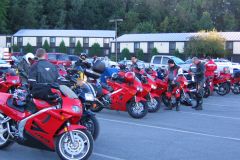

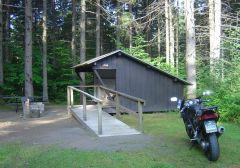
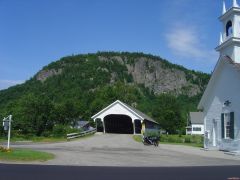
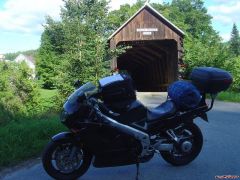

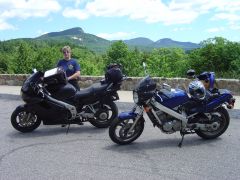

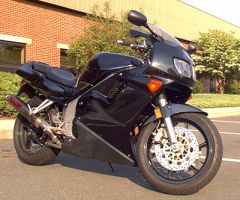
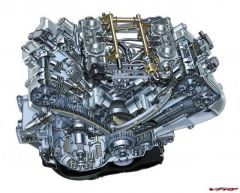
until